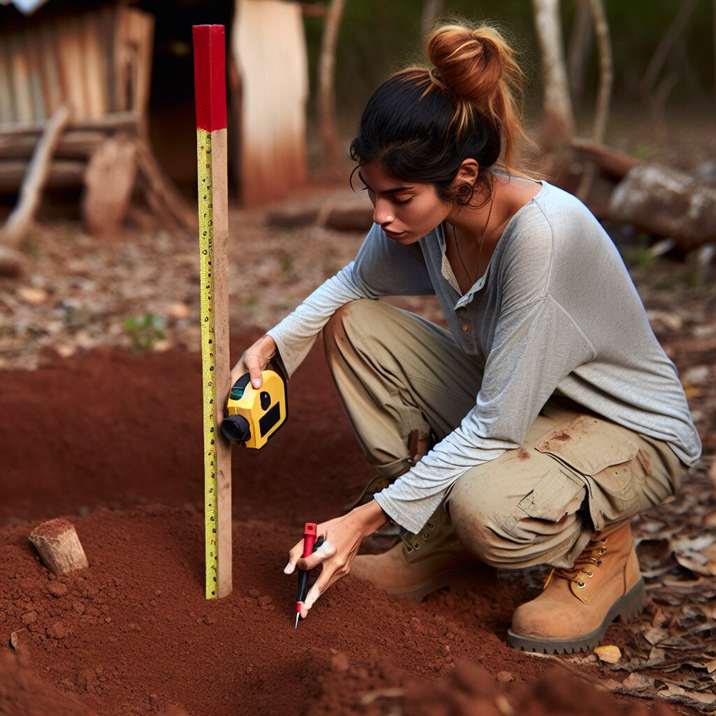Stakes And Batter Boards: A Complete Overview
Introduction
Did you know that stakes and batter boards have been used in construction for centuries, dating back to ancient civilizations? These humble tools have played a crucial role in shaping the way structures are built, from ancient pyramids to modern skyscrapers. Their primary function revolves around marking boundaries and providing a framework for accurate construction, ensuring projects are executed with precision.
In today’s construction landscape, stakes and batter boards are indispensable. They guide builders in aligning structures, laying out foundations, and promoting overall site organization. Whether you’re a seasoned architect, a contractor, or a DIY enthusiast, understanding these tools is essential for successful project execution.
This article provides a comprehensive overview of stakes and batter boards, covering their definitions, historical context, applications, benefits, and the challenges faced in their use. By delving into these topics, you will gain a better understanding of how to leverage these tools effectively in your construction endeavors.
What is Stakes And Batter Boards?
Definition
Stakes and batter boards are essential tools in construction and surveying. Stakes are pointed pieces of wood or metal driven into the ground to mark specific points or boundaries. They serve as reference points for measurements and alignments. Batter boards, on the other hand, are horizontal boards attached to vertical stakes, forming a frame that outlines the shape and dimensions of a construction project. Together, they provide a clear visual guide for builders, enabling them to maintain accuracy throughout the construction process.
Historical Context
The use of stakes and batter boards in construction can be traced back to ancient Egypt, where builders relied on simple wooden stakes to outline the pyramids. Over the centuries, these tools have evolved, but their fundamental purpose remains unchanged. During the Middle Ages, stakes were used extensively in land surveying and property demarcation, laying the groundwork for modern surveying techniques.
In contemporary construction, stakes and batter boards have become synonymous with precision and efficiency. With advancements in materials and technology, these tools are now more durable and versatile than ever before.
The Importance of Stakes And Batter Boards
Stakes and batter boards hold significant relevance in modern construction. They not only facilitate accurate measurements but also enhance communication among team members. Here are some key points highlighting their importance:
- Precision: Stakes and batter boards allow for precise measurements and alignments, ensuring that structures are built according to specifications.
- Efficiency: By providing clear visual markers, these tools help streamline the construction process, reducing the likelihood of errors and rework.
- Site Organization: They aid in organizing the construction site, allowing workers to navigate the area safely and effectively.
Stakes And Batter Boards in the Context of Civil Engineering
In civil engineering, stakes and batter boards play a pivotal role in site planning and execution. They help define property lines, outline excavation areas, and guide the placement of utilities and infrastructure. The accuracy of these tools is crucial in preventing costly mistakes and ensuring compliance with local regulations.
Key Players or Contributors
Several manufacturers have significantly contributed to the development of stakes and batter boards. Innovations in materials, such as eco-friendly options and high-strength alternatives, have broadened the range of available products. For more insights into construction materials, consider exploring our guide on construction stake materials and uses.

How Does Stakes And Batter Boards Work?
The Mechanics of Stakes And Batter Boards
Understanding how stakes and batter boards work is vital for their effective utilization. Here’s a step-by-step process of how these tools are typically employed in construction:
- Site Preparation: The construction area is cleared of debris and vegetation. This ensures a clean workspace for accurate measurements.
- Marking Corners: Stakes are driven into the ground at the corners of the proposed structure. These points serve as references for the layout.
- Setting Batter Boards: Horizontal boards are attached to the stakes, creating a frame that outlines the dimensions of the structure. This frame is leveled and measured to ensure accuracy.
- Verification: Builders verify the layout by measuring diagonally between corners. If the measurements are equal, the layout is square and accurate.
- Excavation and Construction: Once the layout is confirmed, excavation can begin. The batter boards remain in place to guide the construction process.
Technological Foundations of Stakes And Batter Boards
Modern technology has enhanced the use of stakes and batter boards in construction. Tools such as laser levels and digital measuring devices provide additional precision and efficiency. These technologies allow for quicker setups and adjustments, making the construction process more streamlined.
Real-World Applications of Stakes And Batter Boards
Stakes and batter boards are utilized in various projects, from residential homes to large-scale commercial developments. Here are some real-world applications:
- Residential Construction: Builders use stakes and batter boards to outline the foundation of homes, ensuring accurate dimensions and placements.
- Road Construction: In civil engineering projects, these tools help define the alignment of roads and highways, ensuring adherence to design specifications.
- Landscaping: Landscape architects often use stakes and batter boards to plan garden layouts, ensuring that plants and features are placed according to the design.
Case Studies/Examples of Stakes And Batter Boards in Action
- Residential Development: In a recent residential project, builders utilized stakes and batter boards to ensure the foundation was laid out accurately. This prevented costly adjustments later in the project.
- Commercial Building: A commercial construction project employed advanced measuring technology alongside traditional stakes and batter boards, resulting in a 20% reduction in setup time.
Benefits of Using Stakes And Batter Boards
Enhancing Accuracy in Construction
One of the primary benefits of using stakes and batter boards is the enhancement of accuracy in construction. By providing clear reference points, these tools help minimize errors, ensuring that structures are built to precise specifications.
Improving Communication Among Teams
Stakes and batter boards also improve communication among construction teams. With clear visual markers, workers can easily understand the layout and dimensions, fostering collaboration and reducing the likelihood of misunderstandings.
Time and Cost Efficiency
Utilizing stakes and batter boards can lead to significant time and cost savings. By preventing errors and ensuring accurate measurements, construction teams can avoid rework and delays, ultimately leading to timely project completion.
Versatility Across Various Projects
These tools are versatile and can be utilized across a wide range of construction projects, from small residential builds to large commercial developments. Their adaptability makes them a staple in the construction industry.
Challenges in Using Stakes And Batter Boards
Weather and Environmental Factors
One of the challenges faced when using stakes and batter boards is the impact of weather conditions. Heavy rain or strong winds can misalign stakes or damage batter boards, leading to inaccuracies in measurements.
Material Limitations
The materials used for stakes and batter boards can also pose challenges. Wooden stakes may rot or warp over time, while metal stakes can rust. Choosing the right materials is essential for ensuring durability and effectiveness.
Human Error
Human error remains a significant challenge in the use of stakes and batter boards. Mistakes in measurements or placements can lead to costly rework and project delays. Proper training and adherence to best practices are crucial in mitigating these issues.
Internal Link
For more information on best practices for using these tools effectively, check out our guide on Top Construction Stakes and Lath Methods.
Future Trends in Stakes And Batter Boards
Technological Advancements
The future of stakes and batter boards is likely to be shaped by technological advancements. Innovations such as smart stakes with integrated sensors could provide real-time data on positioning and alignment, further enhancing accuracy.
Sustainable Materials
As the construction industry moves toward sustainability, the demand for eco-friendly materials is on the rise. Future stakes and batter boards are expected to be made from sustainable resources, reducing environmental impact while maintaining functionality.
Integration with Building Information Modeling (BIM)
The integration of stakes and batter boards with Building Information Modeling (BIM) technology is another trend to watch. This technology can provide comprehensive data on project layouts, helping teams optimize their use of stakes and batter boards.
Conclusion
Stakes and batter boards are fundamental tools in the construction industry, providing accuracy, efficiency, and organization. Their historical significance and continued relevance underscore their importance in modern construction practices. By understanding how to effectively use these tools and being aware of the challenges they present, construction professionals can enhance their project outcomes.
As the industry evolves, staying informed about trends and innovations will be crucial for leveraging stakes and batter boards to their fullest potential. Embracing technology and sustainable practices will not only improve project accuracy but also contribute to a more efficient and environmentally friendly construction landscape.
For those looking to deepen their understanding of construction tools and their applications, exploring resources on the benefits of stakes and lath can provide additional insights into maximizing project success.
Resource Links:
1. Home Depot – Overview of stakes and batter boards, including their uses in construction and landscaping.
2. Family Handyman – A guide on building batter boards for leveling a foundation.
3. WikiHow – Step-by-step instructions on how to set up and use batter boards effectively.

